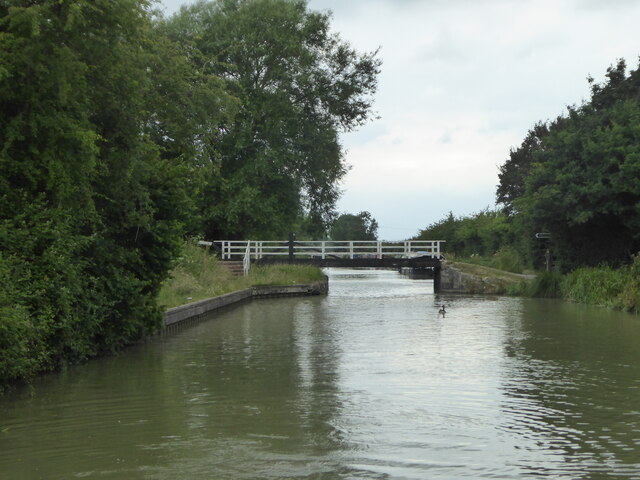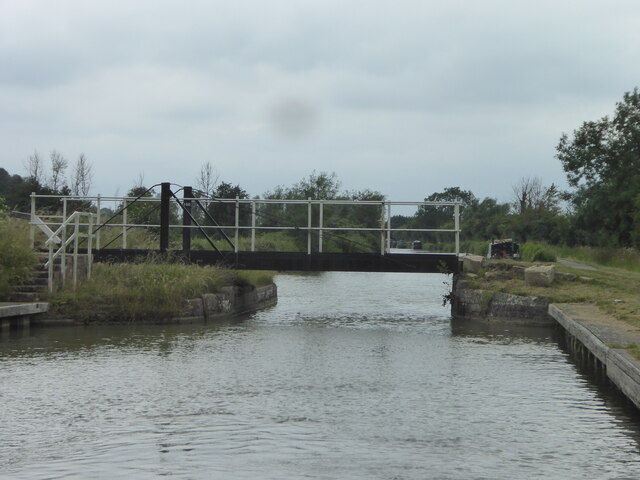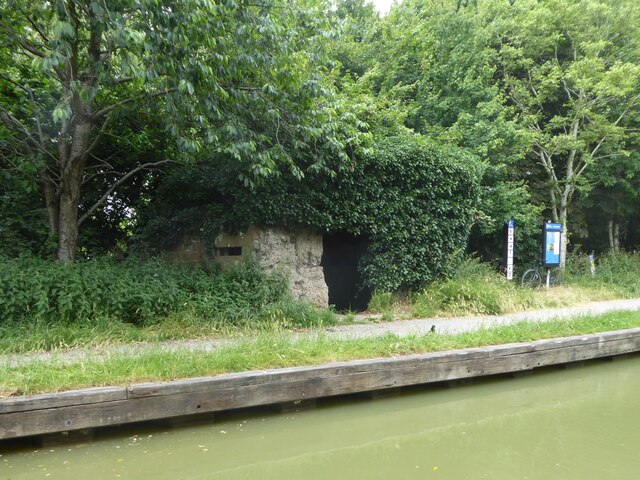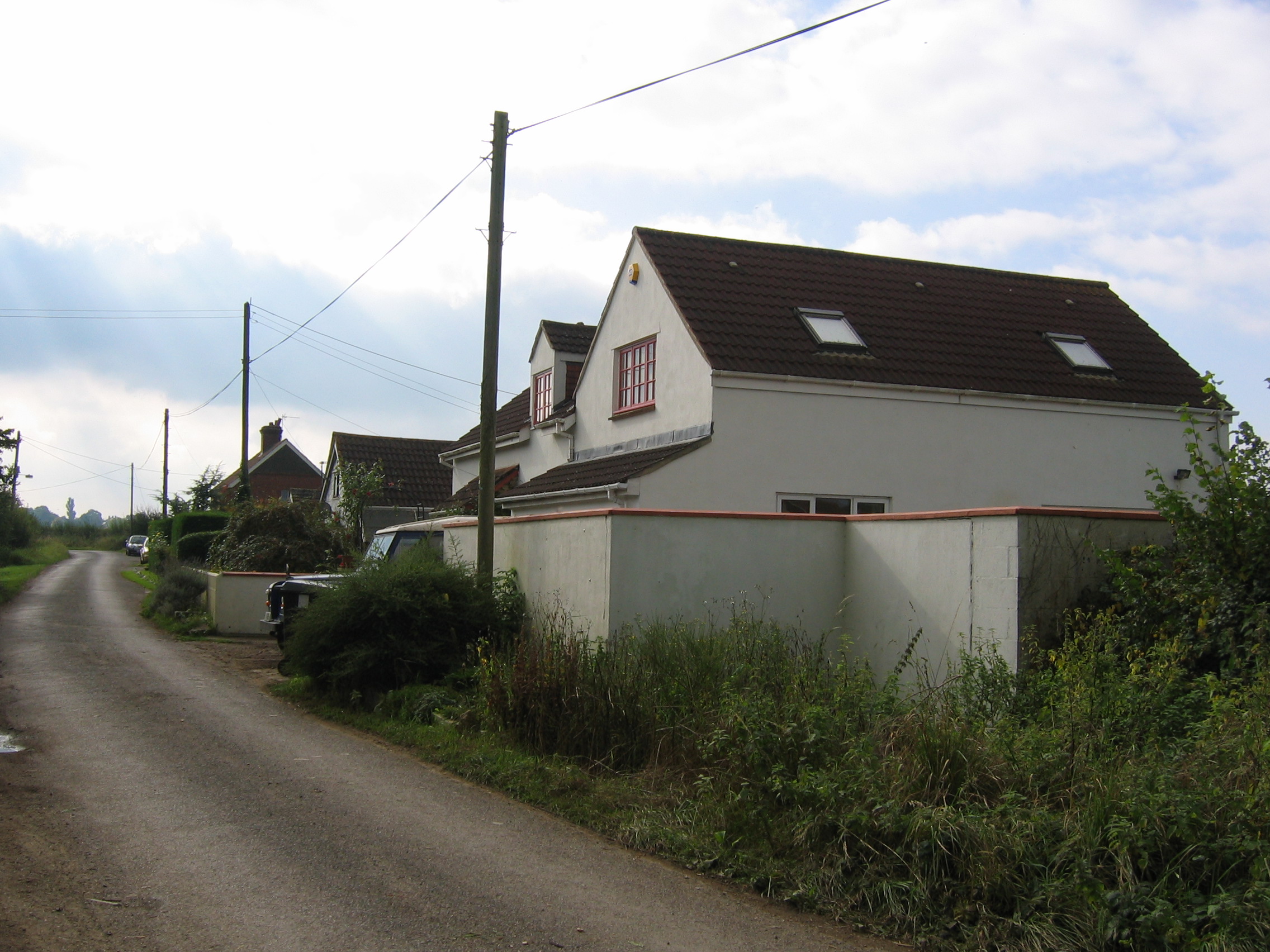Redstocks
Settlement in Wiltshire
England
Redstocks

Redstocks is a small village located in Wiltshire, England. Situated in the picturesque countryside, Redstocks is known for its charming thatched cottages, rolling hills, and peaceful atmosphere. The village is surrounded by lush green fields and woodlands, providing residents and visitors with ample opportunities for outdoor activities such as hiking, cycling, and picnicking.
Redstocks has a close-knit community, with a village hall that hosts various events and activities throughout the year. The village also has a quaint church that dates back to the medieval period, adding to its historical charm. Redstocks is a popular destination for those looking to escape the hustle and bustle of city life and enjoy a slower pace of living.
The village is well-connected to nearby towns and cities, with good transport links making it easy to explore the surrounding area. Redstocks offers a peaceful and idyllic setting for those looking to experience the beauty of the English countryside.
If you have any feedback on the listing, please let us know in the comments section below.
Redstocks Images
Images are sourced within 2km of 51.363093/-2.098215 or Grid Reference ST9362. Thanks to Geograph Open Source API. All images are credited.
![Seend features [10] The garden wall to the former vicarage in High Street runs for some 40 yards and returns along Rusty Lane for some 27 yards. Probably erected in the late 18th century, the High Street length is in red brick, the Rusty Lane length is in rubble stone. The gate, near the corner of Rusty Lane is seen at <a href="https://www.geograph.org.uk/photo/4226374">ST9461 : Seend features [11]</a> Listed, grade II, with details at: <span class="nowrap"><a title="https://historicengland.org.uk/listing/the-list/list-entry/1243833" rel="nofollow ugc noopener" href="https://historicengland.org.uk/listing/the-list/list-entry/1243833">Link</a><img style="margin-left:2px;" alt="External link" title="External link - shift click to open in new window" src="https://s1.geograph.org.uk/img/external.png" width="10" height="10"/></span>
Seend is a hilltop village about 3¾ miles west of Devizes and some 5¾ miles northeast of Trowbridge. The name is from the Old English word ‘sende’ meaning a sandy place. It lies astride the A361 road from Devizes to Trowbridge, which was once the main road from London to Bath. The village has medieval origins, but there is evidence of occupation in Neolithic times. Farming, especially of wool, and later iron ore brought prosperity to Seend, which today is essentially a commuter village.](https://s2.geograph.org.uk/geophotos/07/38/55/7385522_1643ea05.jpg)
![Seend features [12] Church Lane runs from High Street to the parish church of the Holy Cross. On the east side of the lane is this garden wall to the Manor House. Built, of red brick with an ashlar coping, in the late 18th or early 19th century, the wall runs along High Street for some 75 yards then along Church Lane for some 100 yards, ending at the churchyard gate. Listed, grade II, with details at: <span class="nowrap"><a title="https://historicengland.org.uk/listing/the-list/list-entry/1243869" rel="nofollow ugc noopener" href="https://historicengland.org.uk/listing/the-list/list-entry/1243869">Link</a><img style="margin-left:2px;" alt="External link" title="External link - shift click to open in new window" src="https://s1.geograph.org.uk/img/external.png" width="10" height="10"/></span>
Seend is a hilltop village about 3¾ miles west of Devizes and some 5¾ miles northeast of Trowbridge. The name is from the Old English word ‘sende’ meaning a sandy place. It lies astride the A361 road from Devizes to Trowbridge, which was once the main road from London to Bath. The village has medieval origins, but there is evidence of occupation in Neolithic times. Farming, especially of wool, and later iron ore brought prosperity to Seend, which today is essentially a commuter village.](https://s3.geograph.org.uk/geophotos/07/38/55/7385523_ff8ef4a8.jpg)
![Seend houses [32] Church Corner Lodge, High Street, was originally the gate lodge to Seend House. Built in the early 19th century, of ashlar under a slate roof. There is a Roman Doric portico. There are 19th and 20th century extensions in red brick to the rear. Attached to the lodge are two ashlar gate piers with short lengths of curved wall on each side out to the road. Listed, grade II, with details at: <span class="nowrap"><a title="https://historicengland.org.uk/listing/the-list/list-entry/1243878" rel="nofollow ugc noopener" href="https://historicengland.org.uk/listing/the-list/list-entry/1243878">Link</a><img style="margin-left:2px;" alt="External link" title="External link - shift click to open in new window" src="https://s1.geograph.org.uk/img/external.png" width="10" height="10"/></span>
Seend is a hilltop village about 3¾ miles west of Devizes and some 5¾ miles northeast of Trowbridge. The name is from the Old English word ‘sende’ meaning a sandy place. It lies astride the A361 road from Devizes to Trowbridge, which was once the main road from London to Bath. The village has medieval origins, but there is evidence of occupation in Neolithic times. Farming, especially of wool, and later iron ore brought prosperity to Seend, which today is essentially a commuter village.](https://s3.geograph.org.uk/geophotos/07/38/62/7386299_27ff1694.jpg)
![Seend houses [33] Numbers 1 to 4 High Street are a row of 4 houses built in the 18th century. Numbers 1 and 2 are a 17th century timber framed range, refronted in red brick. Numbers 3 and 4 are of painted red brick, with ashlar dressings. The roofs are of Bridgwater tile to numbers 1 and 2, and of slate to numbers 3 and 4. Listed, grade II, with details at: <span class="nowrap"><a title="https://historicengland.org.uk/listing/the-list/list-entry/1272703" rel="nofollow ugc noopener" href="https://historicengland.org.uk/listing/the-list/list-entry/1272703">Link</a><img style="margin-left:2px;" alt="External link" title="External link - shift click to open in new window" src="https://s1.geograph.org.uk/img/external.png" width="10" height="10"/></span>
Seend is a hilltop village about 3¾ miles west of Devizes and some 5¾ miles northeast of Trowbridge. The name is from the Old English word ‘sende’ meaning a sandy place. It lies astride the A361 road from Devizes to Trowbridge, which was once the main road from London to Bath. The village has medieval origins, but there is evidence of occupation in Neolithic times. Farming, especially of wool, and later iron ore brought prosperity to Seend, which today is essentially a commuter village.](https://s2.geograph.org.uk/geophotos/07/38/63/7386302_4127574a.jpg)
![Seend houses [34] Dial House, High Street, was originally built in the 15th century and was encased in red brick with ashlar dressings in the 18th century, under a stone slate roof. The front to High Street has a massive projecting 15th century ashlar chimney with a sundial. Some early interior features remain. Listed, grade II, with details at: <span class="nowrap"><a title="https://historicengland.org.uk/listing/the-list/list-entry/1243834" rel="nofollow ugc noopener" href="https://historicengland.org.uk/listing/the-list/list-entry/1243834">Link</a><img style="margin-left:2px;" alt="External link" title="External link - shift click to open in new window" src="https://s1.geograph.org.uk/img/external.png" width="10" height="10"/></span>
Seend is a hilltop village about 3¾ miles west of Devizes and some 5¾ miles northeast of Trowbridge. The name is from the Old English word ‘sende’ meaning a sandy place. It lies astride the A361 road from Devizes to Trowbridge, which was once the main road from London to Bath. The village has medieval origins, but there is evidence of occupation in Neolithic times. Farming, especially of wool, and later iron ore brought prosperity to Seend, which today is essentially a commuter village.](https://s0.geograph.org.uk/geophotos/07/38/63/7386304_ea2fdbbb.jpg)
![Seend buildings [5] In High Street, this gate lodge to Seend House is one of two, the other, Church Corner Lodge <a href="https://www.geograph.org.uk/photo/7386299">ST9461 : Seend houses [32]</a>, has been converted to a house. Constructed of ashlar under a slate roof, with a Roman Doric portico. Attached to the lodge are two ashlar gate piers with short lengths of curved wall on each side out to the road. Listed, grade II, with details at: <span class="nowrap"><a title="https://historicengland.org.uk/listing/the-list/list-entry/1243881" rel="nofollow ugc noopener" href="https://historicengland.org.uk/listing/the-list/list-entry/1243881">Link</a><img style="margin-left:2px;" alt="External link" title="External link - shift click to open in new window" src="https://s1.geograph.org.uk/img/external.png" width="10" height="10"/></span>
Seend is a hilltop village about 3¾ miles west of Devizes and some 5¾ miles northeast of Trowbridge. The name is from the Old English word ‘sende’ meaning a sandy place. It lies astride the A361 road from Devizes to Trowbridge, which was once the main road from London to Bath. The village has medieval origins, but there is evidence of occupation in Neolithic times. Farming, especially of wool, and later iron ore brought prosperity to Seend, which today is essentially a commuter village.](https://s1.geograph.org.uk/geophotos/07/38/63/7386305_fa2cd9ff.jpg)
![Seend houses [35] In High Street and almost totally hidden behind its tall hedge is Crossways. Built, probably, in the 17th century timber framed and encased in brick in the early 19th century. The roof is of Bridgwater tile. Listed, grade II, with details at: <span class="nowrap"><a title="https://historicengland.org.uk/listing/the-list/list-entry/1272681" rel="nofollow ugc noopener" href="https://historicengland.org.uk/listing/the-list/list-entry/1272681">Link</a><img style="margin-left:2px;" alt="External link" title="External link - shift click to open in new window" src="https://s1.geograph.org.uk/img/external.png" width="10" height="10"/></span>
Seend is a hilltop village about 3¾ miles west of Devizes and some 5¾ miles northeast of Trowbridge. The name is from the Old English word ‘sende’ meaning a sandy place. It lies astride the A361 road from Devizes to Trowbridge, which was once the main road from London to Bath. The village has medieval origins, but there is evidence of occupation in Neolithic times. Farming, especially of wool, and later iron ore brought prosperity to Seend, which today is essentially a commuter village.](https://s0.geograph.org.uk/geophotos/07/38/63/7386308_aba191bf.jpg)
![Seend houses [36] Set on the corner of High Street and School Road is Wesley Cottage, named for John Wesley, who traditionally preached from here before the building of the chapel opposite in 1775 <a href="https://www.geograph.org.uk/photo/7387184">ST9460 : Seend buildings [7]</a>. Built in the 17th century of rubble stone, refronted in painted brick in the early 19th century, all under a Bridgwater tile roof. Listed, grade II, with details at: <span class="nowrap"><a title="https://historicengland.org.uk/listing/the-list/list-entry/1243835" rel="nofollow ugc noopener" href="https://historicengland.org.uk/listing/the-list/list-entry/1243835">Link</a><img style="margin-left:2px;" alt="External link" title="External link - shift click to open in new window" src="https://s1.geograph.org.uk/img/external.png" width="10" height="10"/></span>
Seend is a hilltop village about 3¾ miles west of Devizes and some 5¾ miles northeast of Trowbridge. The name is from the Old English word ‘sende’ meaning a sandy place. It lies astride the A361 road from Devizes to Trowbridge, which was once the main road from London to Bath. The village has medieval origins, but there is evidence of occupation in Neolithic times. Farming, especially of wool, and later iron ore brought prosperity to Seend, which today is essentially a commuter village.](https://s2.geograph.org.uk/geophotos/07/38/63/7386382_d53212e2.jpg)
![Seend houses [37] The Hatch, High Street, was built in the early to mid 18th century, possibly incorporating an earlier, 17th century, building. The house was extended on the left circa 1800. Constructed of chequered brick and red brick with ashlar dressings, rubble stone to the rear, all under stone slate roofs. There is another image of the house at <a href="https://www.geograph.org.uk/photo/7386399">ST9460 : Seend houses [38]</a>. Listed, grade II, with details at: <span class="nowrap"><a title="https://historicengland.org.uk/listing/the-list/list-entry/1243882" rel="nofollow ugc noopener" href="https://historicengland.org.uk/listing/the-list/list-entry/1243882">Link</a><img style="margin-left:2px;" alt="External link" title="External link - shift click to open in new window" src="https://s1.geograph.org.uk/img/external.png" width="10" height="10"/></span>
Seend is a hilltop village about 3¾ miles west of Devizes and some 5¾ miles northeast of Trowbridge. The name is from the Old English word ‘sende’ meaning a sandy place. It lies astride the A361 road from Devizes to Trowbridge, which was once the main road from London to Bath. The village has medieval origins, but there is evidence of occupation in Neolithic times. Farming, especially of wool, and later iron ore brought prosperity to Seend, which today is essentially a commuter village.](https://s0.geograph.org.uk/geophotos/07/38/63/7386396_bf99c09e.jpg)
Redstocks is located at Grid Ref: ST9362 (Lat: 51.363093, Lng: -2.098215)
Unitary Authority: Wiltshire
Police Authority: Wiltshire
What 3 Words
///dumplings.bother.distracts. Near Seend, Wiltshire
Nearby Locations
Related Wikis
Redstocks
Redstocks is a hamlet in Wiltshire, England; it is in the civil parish of Melksham Without and is 1.7 miles (2.7 km) east of Melksham. From 1886 to 1950...
Seend railway station
Seend railway station was near the village of Seend in Wiltshire, England. The station was a stop on the Devizes Branch Line, between Semington and Bromham...
Seend Locks
Seend Locks (grid reference ST933613) are at Seend Cleeve, Wiltshire on the Kennet and Avon Canal, England. They have a combined rise/fall of 38 ft 4ins...
Melksham Town F.C.
Melksham Town Football Club is a football club based in Melksham, Wiltshire, England. Affiliated to the Wiltshire Football Association, they are currently...
Nearby Amenities
Located within 500m of 51.363093,-2.098215Have you been to Redstocks?
Leave your review of Redstocks below (or comments, questions and feedback).











